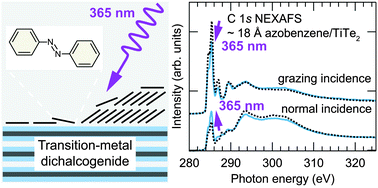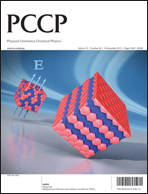Electronic structure, adsorption geometry, and photoswitchability of azobenzene layers adsorbed on layered crystals
Abstract
Mono- and multilayers of the molecular photoswitch azobenzene were adsorbed on two layered transition-metal dichalcogenides, semiconducting HfS2 and metallic TiTe2, at temperatures of 80–120 K and investigated in situ using valence-band and core-level photoelectron spectroscopy as well as near-edge X-ray absorption fine structure spectroscopy. The spectroscopic results indicate similar growth modes on the two substrates. In the monolayer systems, the azobenzene molecules tend to lie flat on the surface with average tilt angles of <15°, whereas the multilayer systems show a larger average tilt angle of 35–45°, depending on substrate surface conditions. The chemical environment of azobenzene, as investigated by XPS, does not change significantly from mono- to multilayers suggesting weak adsorbate–substrate coupling for the molecular layer that forms the interface with the substrate. Irradiation with ultraviolet light with a wavelength of 365 nm leads to a partial rearrangement of the adsorbed azobenzene molecules with a trans-to-cis conversion of up to 35%.


 Please wait while we load your content...
Please wait while we load your content...